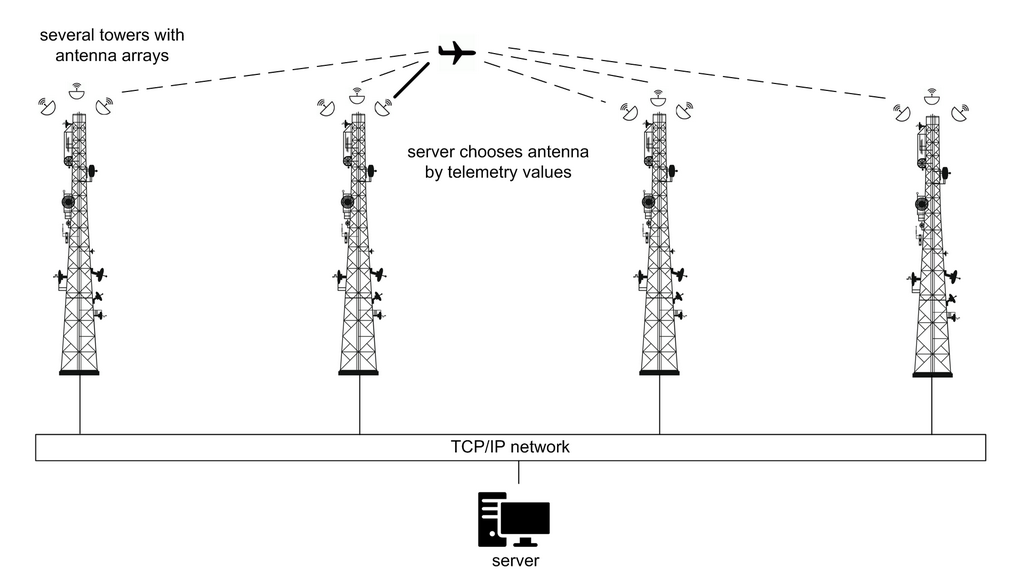
Ground stations can be combined into a single network to provide continuous communication with a mobile object that moves along desired path over long distances.
The control server coordinates reception from several(up to hundreds) ground stations to provide continuous communication with a mobile object or objects. Server is implemented on Linux and can run on platforms that support this OS (PC, Raspbery Pi, etc.)
Ground stations constantly transmit(via the tcp/ip network) data about their state and the quality of communication with a moving object (SNR, CRC, received signal level, etc.) to server.
Due to this, server can choose the best ground station that provides communication with the mobile object in real time. That grants the ability to organize diversity reception(for traffic from a mobile unit to a server). Several ground stations simultaneously receive data from a mobile unit and send them to a server for merging. Thereby communication errors from different stations are compensated.
Test conditions: rough terrain. Ground antenna - 20 dB (40 × 40 cm). Communication range (video at a speed of 6 Mbit/s) - 84 km with altitude of aircraft more than 700 meters (line of sight). The CBA control channel has a large margin of range. Two switched on-board antennas minimized the effects of shadowing during aircraft maneuvers.
Regarding the development of communication systems to meet your requirements or the purchase of ready-made solutions, you can write to us by email info@greencode.su or use the form on the right.
Our field of activity includes: